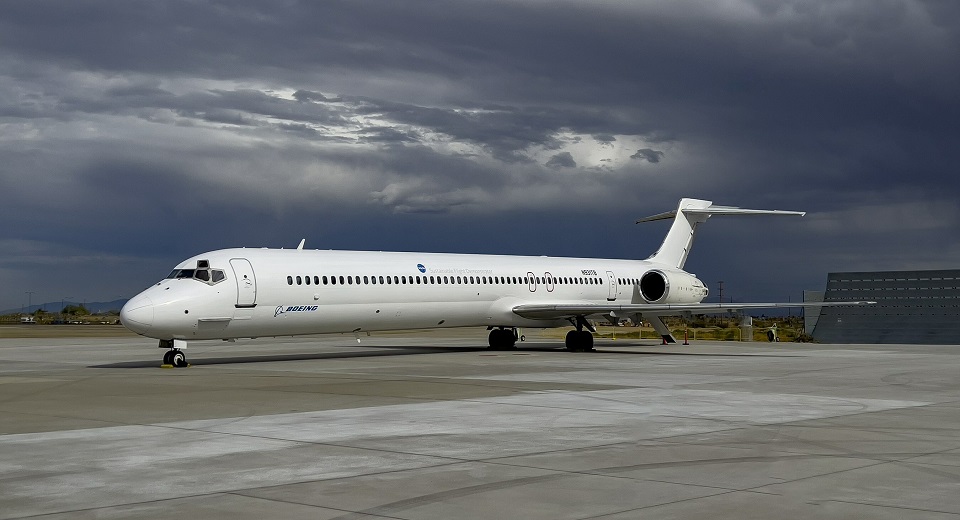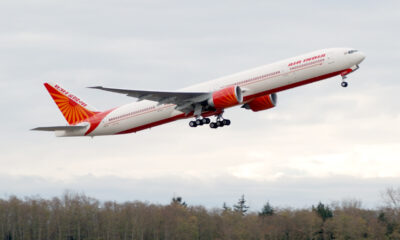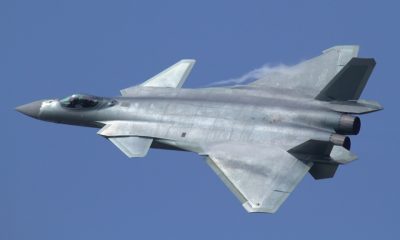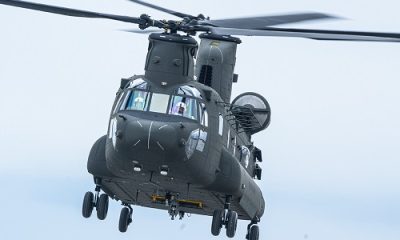Aviation
Boeing’s X-66 Modification: Engine Removal & Adding Scanning Technology

Boeing has started removing engines and finishing 3D metrology scans to inform the plane’s design and build plan on an aircraft that will become the X-66 Sustainable Flight Demonstrator (SFD).
To test the Transonic Truss-Braced Wing (TTBW) design, the original wings of the MD-90 jet will soon be removed. In their place will be new, ultrathin wings supported by struts with greater spans and aspect ratios. Because of its larger wing span and increased aerodynamic efficiency, TTBW may be able to take advantage of more opportunities to cut emissions and fuel use.
NASA’s first experimental aircraft project aimed at assisting the United States in reaching its net-zero aviation greenhouse gas emissions target is the X-66. Testing on land and in the air is anticipated to start in 2028.
Boeing released a time-lapse video of recent steps in the conversion including:
- Removal of the engines and thrust reversers
- Jacking and shoring of the jet to simulate the condition of the airplane during full modification
- 3D laser scanning of the airplane structure
Boeing will overlay the new X-66 components on top of the current MD-90 structure using 3D modeling software and the scanned data. This will allow for more precise spatial integration and the chance to identify and reduce risks early in the modification process.

Aviation
Farnborough 2024: A Landmark Airshow Concludes with £81.5 Billion in Deals

As the 45th edition of the Farnborough International Airshow (FIA2024) concluded, it proved to be a tremendous success. The event, which ended yesterday, saw £81.5 billion worth of deals signed and 260 firm commercial aircraft orders placed within the first four days. For the UK alone, the deals announced amounted to £13 billion.
The show ended with an exhilarating final air display. The Starlings Aerobatic Team performed an impressive formation flight, while the Stampe Formation team showcased their vibrant heritage aircraft. The Royal Air Force’s F-35 flyover and the F-15QA’s powerful farewell flight added to the excitement. The British Army’s renowned Red Devils parachuted down, providing a spectacular closing to the event.
Day 2 Highlights: Airbus, Boeing, and Embraer Orders at Farnborough International Airshow 2024 : Click here
With this year’s orders finalized, the focus on the fifth and final day of FIA2024 shifted to inspiring the next generation of pilots, engineers, manufacturers, and innovators. We eagerly anticipate seeing everyone again at the Farnborough International Airshow 2026.
Airbus Expands Reach with Major Orders
Airbus has secured two significant deals that will expand its presence in the global market. The Abra Group, aiming to enhance its international long-haul operations, signed a Memorandum of Understanding (MoU) for five A350-900 aircraft. Additionally, flynas, Saudi Arabia’s leading low-cost carrier, strengthened its partnership with Airbus by signing an MoU for 75 A320neo family aircraft and 15 A330-900s.
Embaer Aircraft
In the military aviation sector, Embraer announced a major order from the Paraguayan Air Force (FAP) for six A-29 Super Tucano aircraft. This versatile, multi-mission aircraft will enhance the FAP’s capabilities in armed reconnaissance, close air support, light attack, and advanced training missions.
Virgin Atlantic also made headlines by ordering seven additional A330neo aircraft. This order highlights the airline’s confidence in the A330neo’s performance and passenger comfort, as well as its commitment to sustainability. The advanced technology and fuel efficiency of the A330neo make it an ideal choice for Virgin Atlantic’s transatlantic operations, aligning with their goal of providing an enhanced and eco-friendly travel experience.
Boeing aircraft.
Boeing also had a notable presence on Day 2 of the airshow. Qatar Airways announced an order for 20 additional 777-9 airplanes, reinforcing its commitment to the 777X program. The 777-9, touted as the world’s largest and most fuel-efficient twin-engine jet, is set to play a crucial role in Qatar Airways‘ long-haul fleet expansion, offering increased passenger capacity and improved fuel efficiency.
In a significant move for the leasing sector, Macquarie AirFinance announced its first direct order with Boeing, purchasing 20 737-8 aircraft. This order not only doubles Macquarie AirFinance’s existing 737-8 order book, acquired from ALAFCO Aviation Lease and Finance Co. in 2023, but also underscores the continued strong demand for the 737 MAX family, known for its efficiency and versatility.
-

 Travel1 week ago
Travel1 week agoAir India to Expand US Operations with Three New Routes After a Decade
-

 Travel2 weeks ago
Travel2 weeks agoWhy We Should Avoid These Stamps in a Passport
-

 Airlines1 month ago
Airlines1 month agoInvestigations Reveal Fake Chinese Titanium in Boeing and Airbus Jets
-

 Tech4 weeks ago
Tech4 weeks agoChina’s CATL Plans 1,800-Mile Electric Plane Launch by 2027
-

 Airport3 days ago
Airport3 days agoTop 10 Largest Airports in the World by Size
-

 Aerospace4 weeks ago
Aerospace4 weeks agoChina’s Fighter Jets Turn Wings into Autonomous Drones
-

 Airlines4 days ago
Airlines4 days agoAir India Rolls Out A350s for Delhi-New York JFK and Newark Routes
-

 Defence3 weeks ago
Defence3 weeks agoBoeing Enhances Chinook with New Engines and Block II Upgrades at $96 Million







